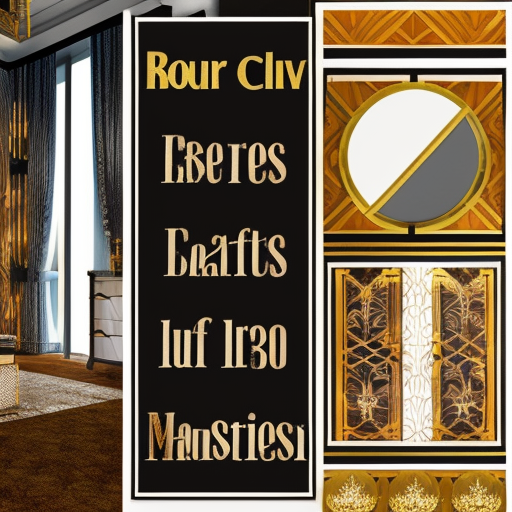Summary:
Art Deco is a prominent art and design style that emerged in the 1920s and 1930s. It is characterized by its sleek, geometric forms, bold colors, and luxurious materials. Art Deco influenced various aspects of design, including architecture, interior design, fashion, and visual arts. This style was popularized during the Roaring Twenties and the Jazz Age, and it continues to inspire contemporary design today.
Origins and Influences:
Art Deco originated in France after World War I and gained popularity in the 1920s. It drew inspiration from various artistic movements, including Cubism, Futurism, and the decorative arts of ancient civilizations such as Egypt and Mesopotamia. The Exposition Internationale des Arts Décoratifs et Industriels Modernes held in Paris in 1925 further popularized the style and gave it its name. Art Deco was embraced by artists, designers, and architects around the world, becoming a global phenomenon.
Characteristics:
Art Deco is characterized by its emphasis on geometric shapes, symmetry, and streamlined forms. It often features bold, vibrant colors and intricate patterns. The use of luxurious materials such as marble, chrome, and exotic woods was also common. The style often incorporates motifs from nature, such as sunbursts, chevrons, and stylized flora and fauna. Art Deco designs are known for their elegance, glamour, and opulence.
Architecture:
Art Deco had a significant impact on architecture, with many iconic buildings designed in this style. Skyscrapers, such as the Chrysler Building in New York City and the Empire State Building, showcase the sleek, vertical lines and decorative details of Art Deco. The style also influenced the design of theaters, hotels, and residential buildings. Notable examples include the Hoover Building in London and the Palais de Tokyo in Paris.
Interior Design:
Art Deco revolutionized interior design, bringing a sense of modernity and luxury to homes and public spaces. The style favored clean lines, geometric patterns, and a mix of materials. Furniture and lighting often featured chrome, glass, and lacquered wood. Exotic materials such as shagreen and tortoiseshell were also used. Art Deco interiors were characterized by their bold color schemes, with black, gold, and silver being popular choices.
Fashion and Jewelry:
Art Deco had a significant influence on fashion, with designers embracing its modern aesthetic. The style was characterized by dropped waists, loose silhouettes, and the use of luxurious fabrics such as silk and velvet. Women’s fashion featured geometric patterns, beading, and sequins. Men’s fashion also embraced the sleek lines and bold colors of Art Deco. Jewelry design during this period was characterized by geometric shapes, vibrant gemstones, and the use of platinum and white gold.
Visual Arts:
Art Deco had a strong presence in the visual arts, including painting, sculpture, and graphic design. Artists such as Tamara de Lempicka and Erté embraced the style, creating works that captured the elegance and glamour of the era. Art Deco also influenced graphic design, with its bold typography and geometric compositions. The style was often used in advertising, posters, and magazine covers.
Legacy:
Art Deco remains a significant influence on contemporary design. Its sleek and modern aesthetic continues to inspire architects, designers, and artists. Many Art Deco buildings have been preserved and restored, serving as a reminder of the style’s enduring appeal. The Art Deco style is celebrated in museums and exhibitions around the world, showcasing its impact on the art and design of the 20th century.












